| Date | Text | |
|---|---|---|
30 Nov 1921

H.J. Muller |
H.J. Muller (biology) H.J. Muller sets out the basic properties of genetic heredity. |
|
30 Nov 1921

Barbary lion |
Barbary lion (biology) Last known wild Barbary lion (P. l. leo) shot in the Atlas Mountains of Morocco. |
|
30 Nov 1921

Vitamin E |
Vitamin E (chemistry) Vitamin E is discovered by Herbert McLean Evans and Katharine Scott Bishop at the University of California, Berkeley. |
|
30 Nov 1921

Czech |
Czech (chemistry) Czech chemist Jaroslav Heyrovský invents polarographic methods of chemical analysis. |
|
30 Nov 1921
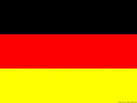
German |
German (chemistry) German chemist Hermann Staudinger proposes what he will come to call macromolecules. |
|
30 Nov 1921
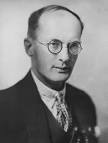
Bronisław Malinowski |
Bronisław Malinowski (ethnology) Bronisław Malinowski's influential ethnological text Argonauts of the Western Pacific is published. |
|
30 Nov 1921

Ludwig Wittgenstein |
Ludwig Wittgenstein (mathematics) First publication of Ludwig Wittgenstein's Tractatus Logico-Philosophicus in an English translation. |
|
30 Nov 1921

Ernst Steinitz |
Ernst Steinitz (mathematics) Ernst Steinitz proves Steinitz's theorem in polyhedral combinatorics. |
|
30 Nov 1921
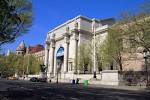
American Museum of Natural History |
American Museum of Natural History (paleontology) First of four successive American Museum of Natural History expeditions to Mongolia under Roy Chapman Andrews which will discover fossils of Indricotherium (a gigantic hornless rhinoceros then named "Baluchitherium"), Protoceratops, a nest of Protoceratops eggs (found in 1995 to be from Oviraptor), Pinacosaurus, Saurornithoides, Oviraptor and Velociraptor, none of which were known before. |
|
30 Nov 1921

Arthur Compton |
Arthur Compton (physics) Arthur Compton studies X-ray photon scattering by electrons. |
|
30 Nov 1921

Otto Stern |
Otto Stern (physics) Otto Stern and Walther Gerlach show "space quantization". |
|
30 Nov 1921

Hilding Faxén |
Hilding Faxén (physics) Hilding Faxén introduces Faxén's law for the velocity of a sphere in fluid dynamics. |
|
30 Nov 1921
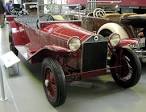
Lancia Lambda |
Lancia Lambda (technology) Lancia Lambda is the first automobile to use monocoque construction. |
|
30 Nov 1921

Madeleine Vionnet |
Madeleine Vionnet (technology) Madeleine Vionnet introduces the bias cut dress in Paris. |
|
05 Jan 1922
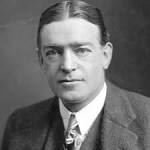
Ernest Shackleton |
death Ernest Shackleton Ernest Shackleton (born 1874), explorer. |
|
09 Jan 1922

Har Gobind Khorana |
birth Har Gobind Khorana Har Gobind Khorana (died 2011), Indian-born biochemist and Nobel Prize in Physiology or Medicine laureate (shared with Ralph F. Hirschmann). |
|
11 Jan 1922

insulin |
insulin (medicine) First successful insulin treatment of diabetes, by Frederick Banting in Toronto. |
|
15 Jan 1922

Edward Hopkinson |
death Edward Hopkinson Edward Hopkinson (born 1859), electrical engineer. |
|
22 Jan 1922

Camille Jordan |
death Camille Jordan Camille Jordan (born 1838), mathematician. |
|
24 Jan 1922
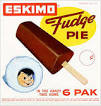
Eskimo Pie |
Eskimo Pie In 1922, the Eskimo Pie "confection", an ice cream centre covered in chocolate, was patented by Christian K. Nelson of Onawa, Iowa. (No. 1,404,539). The patent decribed the article as "in its simplest form, a block or brick or frozen confection within an edible container or shell. The core or center may be an ice cream, sherbet, sorbet, ice, or other material congealed by refrigeration." The shell was described as "like that used in coating chocolate candies, although preferably modified to harden at a lower temperature," and not too brittle. |
|
01 Apr 1922

Hermann Rorschach |
death Hermann Rorschach Hermann Rorschach (born 1884), psychiatrist. |
|
09 Apr 1922
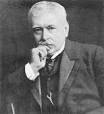
Sir Patrick Manson |
death Sir Patrick Manson Died 9 Apr 1922 at age 77 (born 3 Oct 1844). Scottish physician and parasitologist who has been called the “father of tropical medicine.” He was the first to identify an insect for the spread of infection (1877-79). While working at Amoy, China, he found the development phase of filaria worms in the tissues of blood-sucking mosquitoes. This parasite worm causes the filariasis disease when transferred to human body tissues. In 1894, he proposed a mosquito-malaria hypothesis. Manson moved to Hong Kong (1883-89), where he set up a medical school. In 1886 he co-founded Dairy Farm to produce contamination-free cows' milk. He also researched sleeping sickness and beri-beri, and helped introduce vaccination to the Chinese. He inspired Alphonse Laveran's discovery of the malarial parasite, and Sir Ronald Ross's proof of transmission of malaria by Anopheles mosquitoes. |
|
09 Apr 1922

Patrick Manson |
death Patrick Manson Sir Patrick Manson (born 1844), the "father of tropical medicine". |
|
22 Apr 1922

Wolf V. Vishniac |
birth Wolf V. Vishniac Wolf V. Vishniac (died 1973), American microbiologist. |
|
04 May 1922

Eugenie Clark |
birth Eugenie Clark Eugenie Clark (died 2015), American ichthyologist. |
|
06 May 1922

Ralph F. Hirschmann |
birth Ralph F. Hirschmann Ralph F. Hirschmann (died 2009), German American biochemist, leader of a team responsible for the first organic synthesis of an enzyme, a ribonuclease; Nobel Prize in Physiology or Medicine laureate (shared with Har Gobind Khorana). |
|
26 May 1922

Ernest Solvay |
death Ernest Solvay Ernest Solvay, (born 1838), chemist. |
|
18 Jun 1922
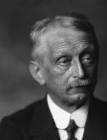
Jacobus Kapteyn |
death Jacobus Kapteyn Jacobus Kapteyn (born 1851), astronomer. |
|
19 Jun 1922

Aage Bohr |
birth Aage Bohr Aage Bohr (died 2009), Danish nuclear physicist and Nobel Prize in Physics laureate. |
|
20 Jun 1922

Degesch |
Degesch (chemistry) Degesch applies to patent the cyanide-based insecticide Zyklon B (credited to Walter Heerdt) in Germany. |
|
15 Jul 1922
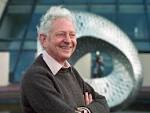
Leon M. Lederman |
birth Leon M. Lederman Born 15 Jul 1922. Leon Max Lederman is an American physicist who, along with Melvin Schwartz and Jack Steinberger, received the Nobel Prize for Physics in1988 for their joint research and discovery (1960-62) of a new subatomic particle, the muon neutrino. Neutrinos are subatomic particles having no detectable mass and no electric charge, which travel at the speed of light. The discovery of muon neutrinos, a new type of neutrino, was followed by discoveries by other scientists of a number of different “families” of subatomic particle. Together, they now form a standard model, a scheme that has been used to classify all known elementary particles. He was director of the Fermi National Accelerator Laboratory in Batavia, Ill. (1979-89). |
|
18 Jul 1922

Thomas S. Kuhn |
birth Thomas S. Kuhn Born 18 Jul 1922; died 17 Jun 1996 at age 73. Thomas Samuel Kuhn was an American science historian and science philosopher was a MIT professor, noted for his highly influential The Structure of Scientific Revolutions (1962). He held that science was not a steady, cumulative acquisition of knowledge, but it is “a series of peaceful interludes punctuated by intellectually violent revolutions.” Then appears a Lavoisier or an Einstein, often a young scientist not indoctrinated in the accepted theories, to sweep the old paradigm away. Such revolutions, he said, came only after long periods of tradition-bound normal science. He pointed out that scientific research and thought are defined by “paradigms,” or trusted theories, concepts, methods and experiments. Such paradigms are accepted by scientists, who continue to extend, refine, explain and measure results until they meet an problem that cannot be resolved within the established framework. Such anomaly or contradiction eventually requires an intellectual revolution, such as the paradigm shifts from Ptolemaic cosmology to Copernican heliocentrism. “Frameworks must be lived with and explored before they can be broken.” |
|
18 Jul 1922

Thomas Kuhn |
birth Thomas Kuhn Thomas Kuhn (died 1996), American philosopher of science. |
|
25 Jul 1922

John B. Goodenough |
birth John B. Goodenough John B. Goodenough, German-born American solid-state physicist. |
|
02 Aug 1922
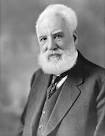
Alexander Graham Bell |
death Alexander Graham Bell Alexander Graham Bell (born 1847), inventor. |
|
18 Aug 1922

W. H. Hudson |
death W. H. Hudson W. H. Hudson (born 1841), naturalist. |
|
24 Aug 1922

Donald Henry Colless |
birth Donald Henry Colless Donald Henry Colless (died 2012), Australian entomologist. |
|
29 Aug 1922

Sophie Bryant |
death Sophie Bryant Sophie Bryant (born 1850), mathematician and educationalist (in a hiking accident). |
|
04 Sep 1922

Edward Anthony Spitzka |
death Edward Anthony Spitzka Died 4 Sep 1922 at age 46 (born 17 Jun 1876). American anatomist and brain morphologist who assisted at the autopsy (29 Oct 1901) of the brain of Leon Franz Czolgosz, the assassin of U.S. president William McKinley. At the time, he had just published an exhaustive series of eight papers on the human brain, but was only in the fourth year of his medical training. Although he detected a few very minor variations in gyri and sulci patterns in the brain of Czolgosz, he reported in the New York Medical Journal (1902) that “nothing has been found in the brain of this assassin that would condone his crime.” He became editor of, and revised, American editions of Gray's Anatomy. Throughout his career he studied the brain morphology of groups of famous people, different races, and criminals, thought ultimately he was unable to link traits to brain structure. |
|
03 Oct 1922
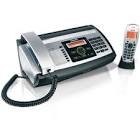
Telephone fax |
Telephone fax In 1922, city telephone lines were used for the first time in the U.S. for the transmission of a facsimile photo in Washington, DC. Charles F. Jenkins sent an image from 1519 Connecticut Ave to the U.S. Navy Radio Staion NOF at Anacostia, D.C. Witnesses from the U.S.Navy and the Post Office Dept. attended the transmission. A photographic plate was used to record the signals at 5502 16th St, N.W. Washington, D.C. Earlier in the year, on 11 Jun 1922, a photograph had been sent by radio across the Atlantic from Rome to Bar Harbor, Maine. That transmission reproduced a 7 x 9.5 in. halftone picture, using light falling on a selenium cell to form the dots. |
|
14 Oct 1922
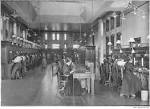
Telephone exchange |
Telephone exchange In 1922, the first automated telephones, the Pennsylvania exchange in N.Y. City, become operational. |
|
04 Nov 1922

British |
British (archaeology) British archaeologist Howard Carter and his men find the entrance to King Tutankhamen's tomb in the Valley of the Kings of Egypt. |
|
08 Nov 1922
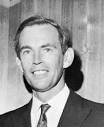
Christiaan Barnard |
birth Christiaan Barnard Christiaan Barnard (died 2001), South African cardiac surgeon. |
|
16 Nov 1922

Max Abraham |
death Max Abraham Died 16 Nov 1922 at age 47 (born 26 Mar 1875). German physicist whose life work was almost all related to Maxwell's theory. The text he wrote was the standard work on electrodynamics in Germany for a long time. Throughout his life, he remained strongly opposed to Einstein's Theory of Relativity, objecting to its postulates which he felt were contrary to classical common sense. He further held that the experimental evidence did not support that theory. In 1902, he had developed a theory of the electron in which he held that an electron was a perfectly rigid sphere with a charge distributed evenly over its surface. He also believed in the ether theory, thought that future astronomical data would validate it, and thus relativity was not in fact a good description of the real world. |
|
19 Nov 1922

Stanley Keith Runcorn |
birth Stanley Keith Runcorn Born 19 Nov 1922; died 5 Dec 1995 at age 73. British geophysicist Southport, Lancashire, who was the first to discover evidence of the periodic polar reversals of the Earth's magnetic field. In the 1950s he was a pioneer in the fledgling discipline of paleomagnetism, or remanent magnetism, the study of the residual magnetism. He also made substantial contributions to various fields, including convection in the Earth and Moon, the shape and magnetic fields of the Moon and planets, magnetohydrodynamics of the Earth's core, earth currents, changes in the length of the day and polar wandering, continental drift and plate tectonics. He was murdered, aged 73, when he disturbed a thief in his motel room in San Diego, while on a US lecture tour. |
|
19 Nov 1922
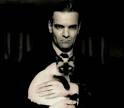
Yuri Valentinovich Knorozov |
birth Yuri Valentinovich Knorozov Born 19 Nov 1922; died 31 Mar 1999 at age 76. Russian linguist, epigraphist, and ethnologist who played a major role in the decipherment of Mayan hieroglyphic writing. Remarkably, though not permitted to leave the Soviet Union during the post-war decades he focused on the Mayan language, Knorozov still managed to decipher the phonetic code of the pre-Columbian society on the Mexican peninsula. Others before him had tried to "read" Maya glyphs without success, because they tried to interpret them in terms of an alphabet. Knorozov instead advocated phoneticisms. He realized that the purported alphabet represented a part of the Maya syllabary, and then identified many of the syllabic marks, or glyphs, found on the many Mayan tombs and monuments. |
|
22 Nov 1922
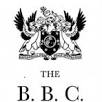
British Broadcasting Company |
British Broadcasting Company (technology) The British Broadcasting Company (BBC) begins broadcasting a radio service in the United Kingdom from station 2LO in London. |
|
12 Dec 1922
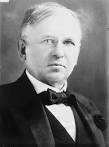
John Wanamaker |
death John Wanamaker Died 12 Dec 1922 at age 84 (born 11 Jul 1838). American businessman who founded a department store and adopted new technology in his buildings for publicity. His “Grand Depot” was the first U.S. store to use electric arc lamps (26 Dec 1878) in Philadelphia, Pa. Wanamaker had a major ready-made men's clothing retail clothing business (opened 1861) when he bought (1875) the Pennsylvania Railroad depot for $500,000 and converted it into his innovative Grand Depot department store. The city's Centennial Exposition visitors boosted sales. It became one of the largest U.S. department stores. From 1885, the store was called "Wanamaker's". His stores were a base for experimental wireless from 1910, and in 1922, a radio broadcast station was opened in the store to initiate radio receiver sales. |